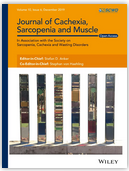 Facioscapulohumeral muscular dystrophy (FSHD) is one of the most frequent late-onset muscular dystrophies, characterized by progressive fatty replacement and degeneration involving single muscles in an asynchronous manner. With clinical trials at the horizon in this disease, the knowledge of its natural history is of paramount importance to understand the impact of new therapies. The aim of this study was to assess disease progression in FSHD using qualitative muscle magnetic resonance imaging, with a focus on the evolution of hyperintense lesions identified on short-tau inversion recovery (STIR+) sequences, hypothesized to be markers of active muscle injury.
Facioscapulohumeral muscular dystrophy (FSHD) is one of the most frequent late-onset muscular dystrophies, characterized by progressive fatty replacement and degeneration involving single muscles in an asynchronous manner. With clinical trials at the horizon in this disease, the knowledge of its natural history is of paramount importance to understand the impact of new therapies. The aim of this study was to assess disease progression in FSHD using qualitative muscle magnetic resonance imaging, with a focus on the evolution of hyperintense lesions identified on short-tau inversion recovery (STIR+) sequences, hypothesized to be markers of active muscle injury.
One hundred genetically confirmed consecutive FSHD patients underwent lower limb muscle magnetic resonance imaging at baseline and after 365 ± 60 days in this prospective longitudinal study. T1 weighted (T1w) and STIR sequences were used to assess fatty replacement using a semiquantitative visual score and muscle oedema. The baseline and follow-up scans of each patient were also evaluated by unblinded direct comparison to detect the changes not captured by the scoring system.
This study confirms that STIR+ lesions represent prognostic biomarkers in FSHD and contributes to delineate its radiological natural history, providing useful information for clinical trial design. Given the peculiar muscle-by-muscle involvement in FSHD, MRI represents an invaluable tool to explore the modalities and rate of disease progression.
